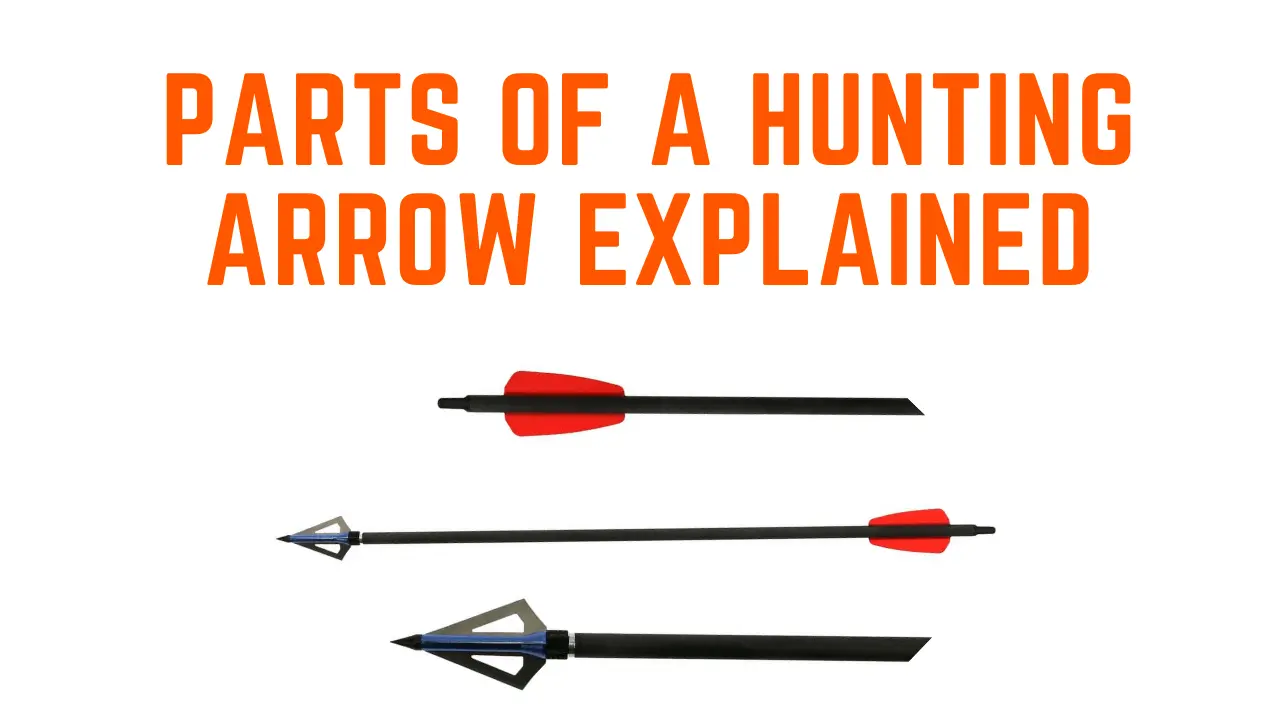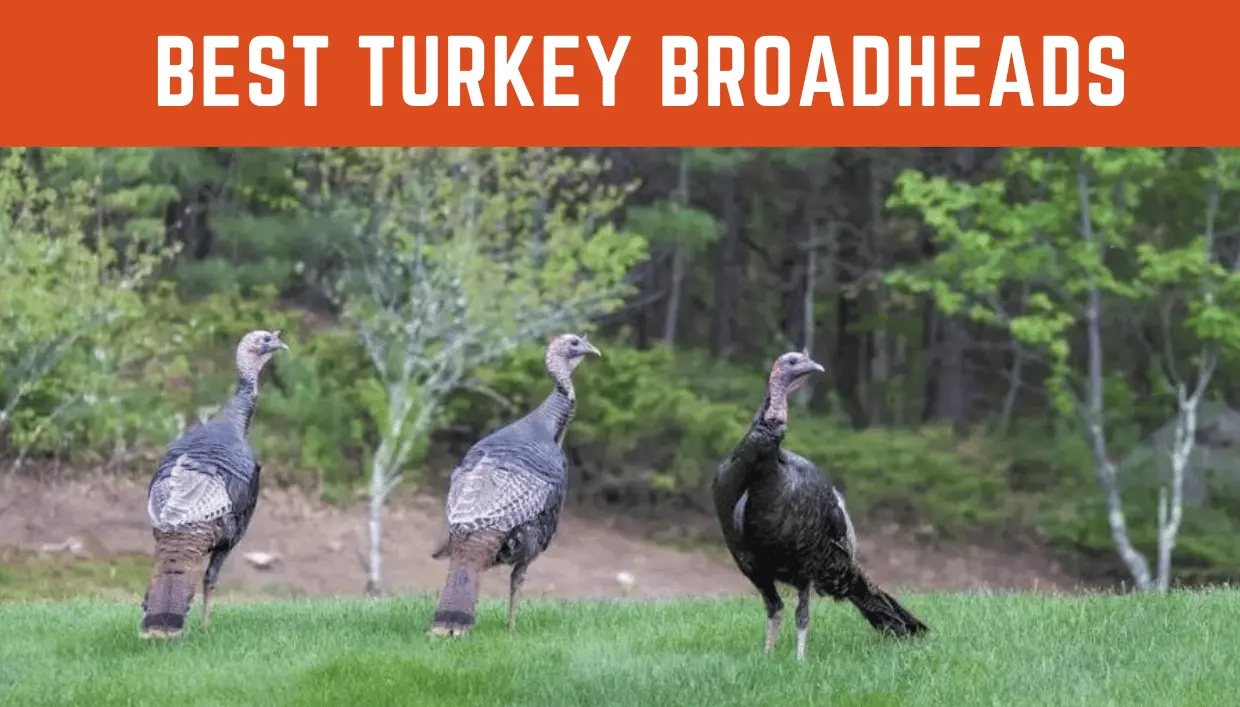How Fast Can a Deer Run? Know All About It
Deer are fascinating creatures that have captured the imaginations of nature enthusiasts and wildlife experts alike. With their graceful movements and gentle demeanor, it’s easy to forget that deer are also incredibly fast animals. Their speed is a crucial aspect of their survival in the wild, where they must evade numerous predators on a daily basis.
While we often think of how fast can a deer run, depending on the species, deer can reach speeds of 35-40 miles per hour (55-65 kilometers per hour). This is really impressive. However, like humans, deer rarely run at their top speed and are more likely to use different gaits like jogging, trotting, or walking to conserve energy.
In this article, we’ll explore the various factors that affect how fast deer can run, including their age, health, and environment. We’ll also discuss some fascinating facts about deer running abilities and examine why their speed is such a critical survival mechanism in the wild.
Why Are Deer So Fast?
Deer have developed impressive speed as a survival mechanism in their natural habitat. Their swift and agile movements help them to evade predators like cougars, bears, and wolves, which are all potential threats to their survival. But why are deer so fast? The answer lies in their unique physiology and muscle fibers.
Deer have incredibly coordinated legs that work together in perfect rhythm to propel them forward at incredible speeds. Their muscle fibers, in particular, play a significant role in their speed. According to research, deer have a high proportion of fast-twitch muscle fibers compared to humans and many other animals. These fibers allow deer to produce powerful bursts of energy quickly, making them capable of running at speeds of up to 40 miles per hour.
Deer also have an incredible ability to store energy in their tendons, which they can use to improve their speed when needed. When a deer is running at full speed, its tendons act as springs, storing and releasing energy with each stride to propel the animal forward.
But the deer’s speed is not just a result of their physiology. Other factors, such as their diet, habitat, and overall health, can also affect their running abilities. For instance, a deer that is malnourished or injured will not be able to run as fast as a healthy deer.
Moreover, deer have developed a keen sense of hearing and vision to detect any potential predators, which allows them to respond quickly by running away. They also have excellent maneuverability, allowing them to make sudden turns and changes in direction to evade predators.
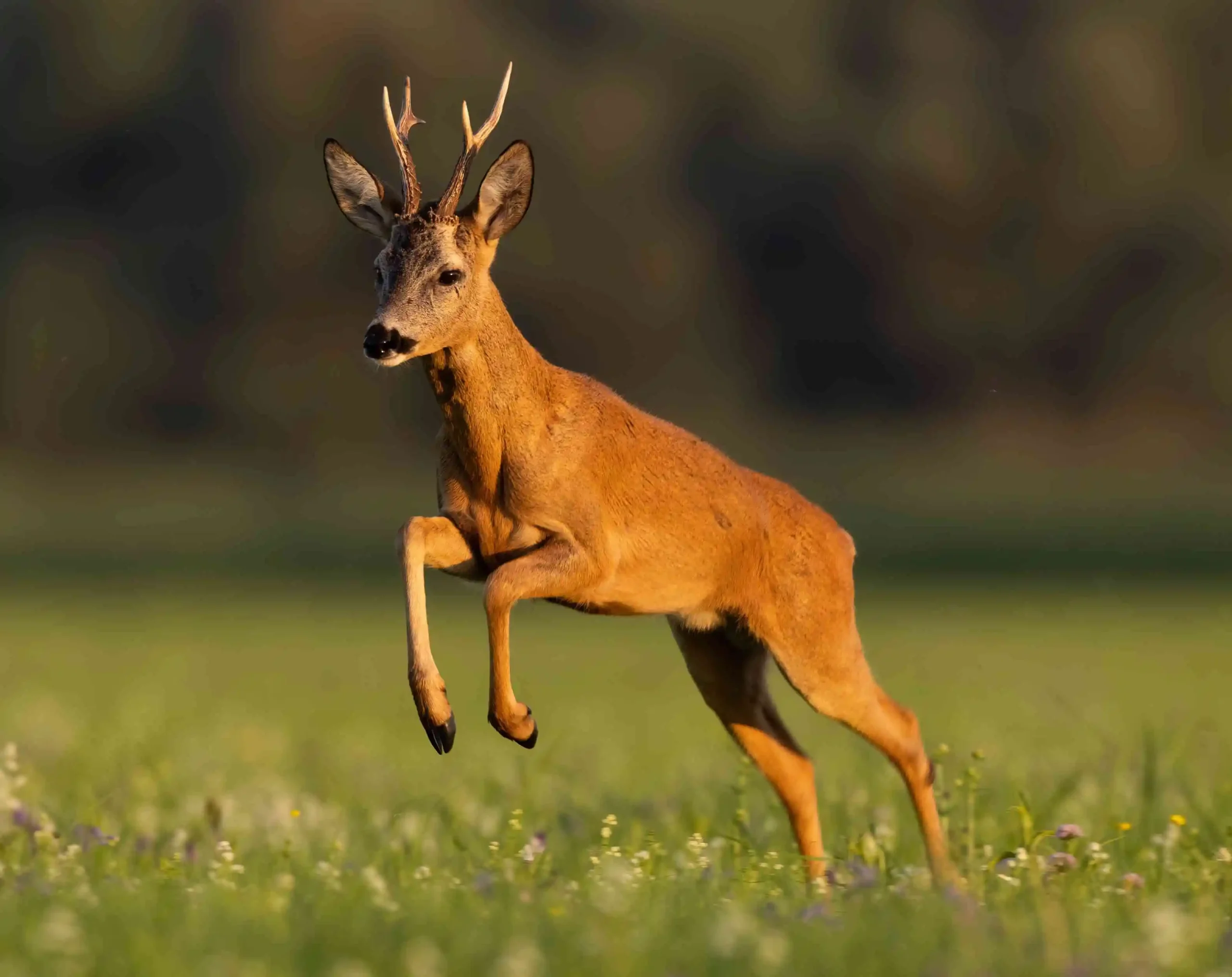
How Fast Can Whitetail Deer Run?
Whitetail deer are an iconic species found in the eastern half of the United States, and their agility and speed are essential for survival in their natural habitat. These gentle giants can reach impressive speeds of up to 35 miles per hour (56 km/h) when necessary, making them one of the fastest land animals in North America.
Whitetail deer are known for their graceful gait patterns, which include walking, trotting, and bounding. They move with remarkable coordination and grace, using their powerful legs to leap over obstacles and navigate difficult terrain.
In addition to their speed on land, whitetail deer are also capable swimmers. During the summer months, they may wade into bodies of water to forage on aquatic plants and other food sources.
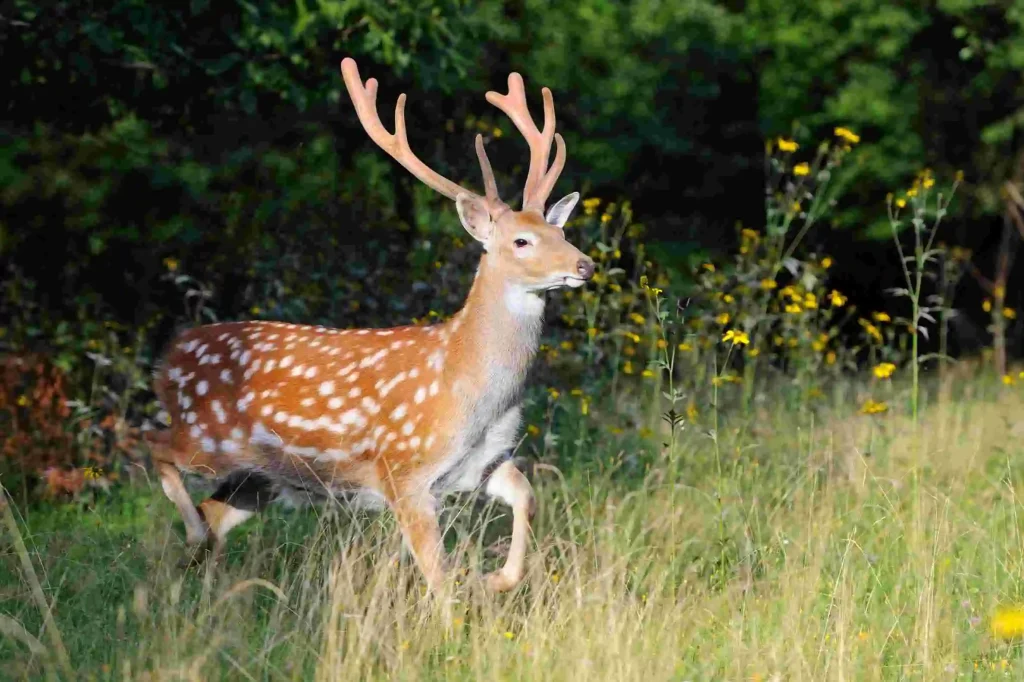
But what triggers a whitetail deer to run at full speed? The answer lies in their survival instincts. These animals are preyed upon by predators like coyotes, wolves, and mountain lions, and they have developed an acute sense of danger that can send them running at the slightest hint of a threat.
Humans are also perceived as a threat to whitetail deer, and they can easily scare these animals into a swift sprint. If you’re out in the woods and come across a deer, it’s essential to keep a safe distance and avoid startling them. Sudden movements or loud noises can cause them to bolt, potentially injuring themselves or others in the process.
Which is Faster: A Horse or a Deer?
Regarding speed, horses and deer are impressive animals, but there are some key differences between them. Horses are much larger and heavier than deer and have been bred for centuries to be the perfect riding and working animal for humans. As a result, horses have powerful muscles that allow them to gallop at incredible speeds.
Generally, a galloping horse can reach up to 40 miles per hour (65 km/h). However, there are variations in speed depending on the breed of horse. For example, Quarter Horses are known to be the fastest breed of horse worldwide, with top speeds ranging from 22.3 to 57.5 miles per hour (36-93 km/h), while Arabians are the slowest, with top speeds ranging from 20.3 to 33.9 miles per hour (33-55 km/h).

On the other hand, deer are smaller and lighter than horses, but they have a finely-tuned physiology that allows them to run incredibly fast when needed. While horses use their powerful muscles to gallop, deer use their nimble and coordinated legs to run at high speeds. The white-tailed deer, for example, can reach speeds of up to 35 miles per hour (56 km/h) when they need to escape predators.
In addition to differences in size and physiology, horses and deer also have different running styles. Horses are powerful and sturdy, and their galloping gait involves pushing off the ground with their hind legs and landing on their front legs.
This motion allows them to cover a lot of ground quickly, making them ideal for pursuits like hunting and racing.
Deer, on the other hand, have a more delicate running style. They use a bounding gait, where they leap forward with all four legs at once and then land on their front legs before repeating the process. This motion allows them to move quickly and efficiently over rough terrain and through dense vegetation, making them well-adapted for life in the wild.
Another factor that can affect the speed of both horses and deer is their surroundings. Horses are generally faster on flat, even terrain, while deer may be able to outrun them in more rugged or wooded areas where their nimble legs and bounding gait give them an advantage.
Can a Dog Outrun a Deer?
Hunting with dogs has a long history, with people using canines for various purposes, including hunting cougars and deer. The practice of using dogs for hunting can be traced back centuries, and it continues to this day.
When it comes to hunting deer, one common question is whether a dog can outrun a deer. The answer is not a simple yes or no, as it depends on various factors. For example, a dog’s breed and physical fitness play a significant role in determining how fast it can run.
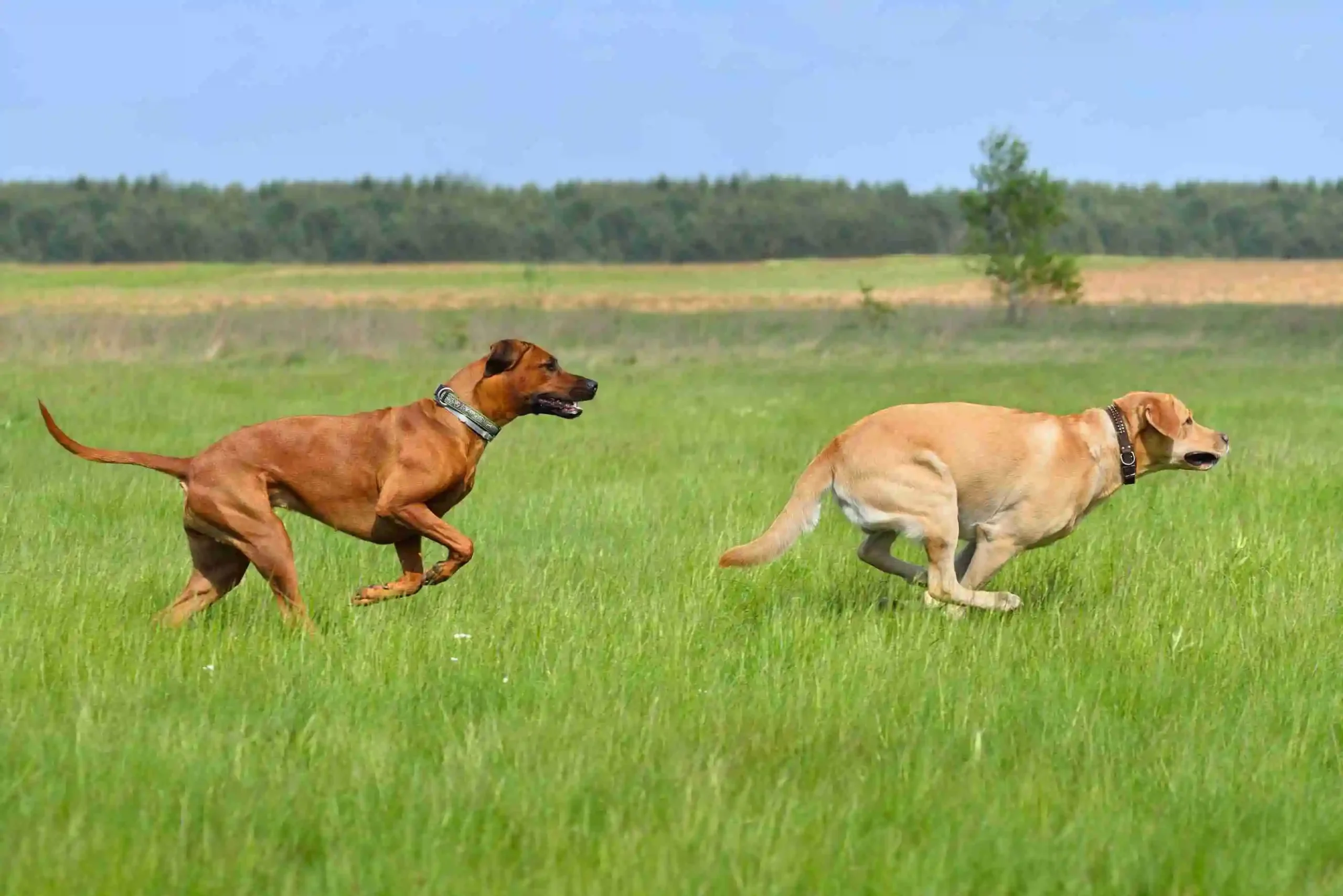
Some dog breeds, such as the greyhound, are known for their impressive speed and can reach up to 45 miles per hour (72 km/h). However, other breeds, such as the German shepherd or the boxer, are not as fast but can still run at impressive speeds of 30 miles per hour (48 km/h) and 35 miles per hour (56 km/h), respectively. It’s important to note that not all dogs are suitable for hunting, and it’s crucial to choose a breed that has been trained for hunting and has the physical capabilities to keep up with deer.
But breed and physical fitness are not the only factors that affect a dog’s ability to outrun a deer. The terrain and environmental conditions also play a significant role. For example, if the hunting ground is an open plain with no obstacles, a dog would easily reach its top speed. On the other hand, if the hunting ground is mountainous with rocky terrain and dense vegetation, it can be more challenging for a dog to keep up with a deer.
Training and maintaining a dog’s physical fitness to reach its full potential is essential. Regular exercise, a healthy diet, and proper care can help dogs reach their maximum speed and stamina. Additionally, hunting with dogs is a controversial practice, and it can be dangerous for both the dog and the deer. It’s important to follow ethical hunting practices and ensure all animals’ safety.
Finally, it’s worth noting that hunting with dogs is illegal in some states, and it’s crucial to check the local regulations before engaging in this activity.
Are Deer Faster Than Wolves?
Wolves are highly skilled predators that are known for their intelligence and strategic hunting tactics. While they are capable of running at speeds of over 35 mph, which is about the same speed as deer, they typically do not rely on their speed to catch prey. Instead, wolves use a combination of tactics to wear down their prey and catch them off-guard.
Unlike other predators that rely solely on speed and agility to catch their prey, wolves hunt in packs, which allows them to take down larger prey like deer. The pack works together to pursue the prey, often over long distances, while taking turns to rest and recover.
Once the prey is exhausted, the pack moves in for the kill, using their strength and teeth to take down the animal.
While wolves are not known for their speed, they are incredibly efficient hunters, capable of taking down prey that is much larger than themselves. In fact, wolves have been known to take down deer that are up to 10 times their size.
Deer, on the other hand, are also fast runners, capable of reaching speeds of up to 45 mph for short bursts. However, they are not able to maintain this speed for long distances and will tire quickly. This is where wolves have the advantage, as they are able to outlast their prey and catch them off-guard.
Are Deer Faster than Bears?
When it comes to speed, grizzly bears and deer are quite evenly matched. Grizzly bears are a primary predator of many types of deer, and they are capable of running at about 35 miles per hour (56 km/h), which is roughly the same speed as a deer.
However, it’s important to note that the chase between grizzly bears and deer is not just about speed. These animals have been locked in an evolutionary arms race for millions of years, with each species evolving strategies to outsmart the other.
In addition to speed, deer rely on their agility, quick reflexes, and ability to change direction rapidly to evade predators like grizzly bears. They can also leap over obstacles and cover large distances in a single bound, making them highly elusive prey.
On the other hand, grizzly bears are incredibly powerful and use their strength and endurance to wear down their prey over long distances. They also rely on their keen sense of smell and excellent hearing to track down their prey.
The outcome of a chase between a grizzly bear and a deer depends on a variety of factors, including the terrain, the distance of the chase, and the physical condition of both animals.
In wide-open spaces over long distances, the bear and deer are more evenly matched in terms of speed, but the outcome of the chase is often determined by other factors, such as the bear’s strength and the deer’s agility.
Can You Outrun a Deer?
Humans are not known for their speed, especially when compared to other land mammals. In fact, rabbits, squirrels, and even chickens can outrun us!
While humans are capable of achieving impressive speeds, with Usain Bolt clocking in at 9.58 seconds for 100 meters, our top speed falls somewhere around 28 mph (45 km/h). This puts us behind many other terrestrial animals, including deer, who can run at similar speeds.
But interestingly, researchers have suggested that humans may be able to run faster on all fours or quadrupedal running. One study even suggested that the fastest human on the planet in the future might be a quadrupedal runner at the 2048 Olympics. However, this remains a topic of debate and is not currently considered a viable option for human running.
It’s important to note that the 28 mph speed for humans was tested over short distances and likely overestimates our true capabilities. Nonetheless, it’s safe to say that trying to outrun a deer on foot is not a feasible option for humans.
It’s also worth noting that attempting to chase down a deer is not recommended, as it can be dangerous for both the deer and the person. Instead, it’s best to respect their natural abilities and keep a safe distance.
So, while it’s disappointing that we can’t outrun a deer, we can take comfort in the fact that we have other strengths and abilities that make us unique.
Speed and Blood Loss
Deer are incredibly fast animals, capable of reaching speeds of up to 35 miles per hour (56 km/h). It’s easy to feel intimidated and overwhelmed by their quick movements, especially when trying to track them through the woods.
But there’s more to the story than just their speed. When a deer is wounded, its movement causes an increase in blood pressure, which can lead to a diminished blood supply over time if the wound is fatal. This makes tracking even more crucial but also more challenging, as the blood trail can be misleading.
As hunters, we must always be mindful of the herd when tracking a wounded deer. They can easily become scared and dart around, making it more difficult to follow the trail. It’s important to take our time, remain patient, and be respectful of the animals around us.
In the end, hunting is about more than just the kill. It’s about the connection we feel with nature, the challenge we face, and the respect we have for the animals we pursue. Tracking a wounded deer is a humbling experience that reminds us of the fragility of life and the importance of responsible hunting practices.
How Fast Can a Deer Swim?
Deer are known for their speed and agility on land, but how about in the water? Can they swim as fast as they can run?
Well, the answer is that deer are capable swimmers, but they are not particularly fast in the water. On average, a deer can swim at a speed of around 15 mph (25km/h), which is much slower than their running speed on land.
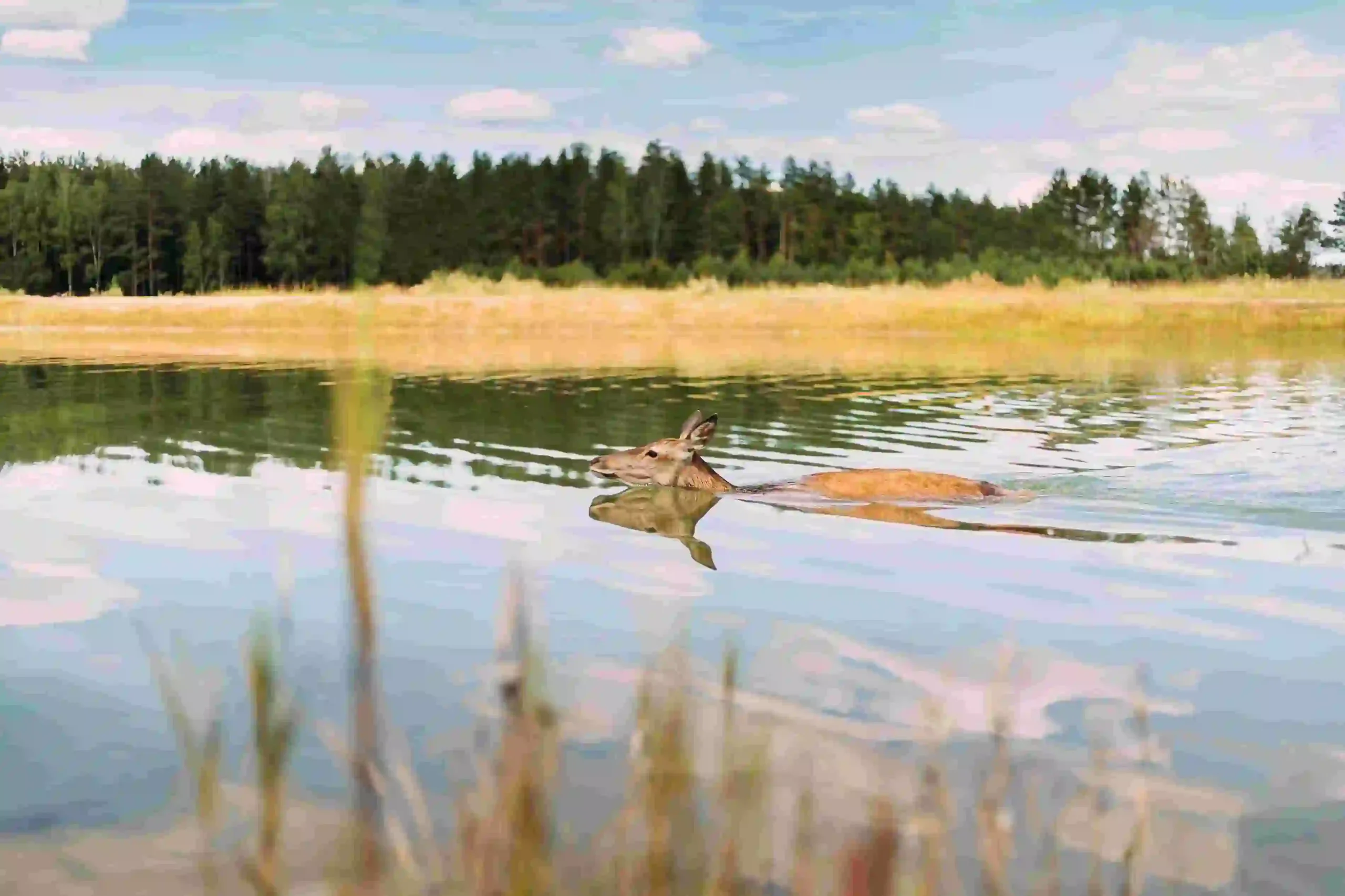
Deer are also not well adapted to swimming and are more suited to life on land. Their hooves are not designed for paddling in the water, and their legs can become heavy and cumbersome when soaked.
However, when faced with a water obstacle, deer may be forced to swim to reach safety or food on the other side. They are known to swim across rivers, lakes, and even small ponds if necessary.
So, while deer are not Olympic-level swimmers, they are capable of getting themselves out of trouble if needed. It’s always fascinating to see how animals adapt to different environments, and the swimming ability of deer is just one example of their amazing resilience and survival instincts.
How To Tell A Deer Is About To Run?
As prey animals, deers rely on their instincts and senses to stay safe in the wild. Hunters and wildlife enthusiasts alike can benefit from knowing the signs that a deer is about to run, as it can help them avoid spooking the animal and increase their chances of observing or hunting them.
There are several signs that a deer is about to run; recognizing them can take some practice and patience.
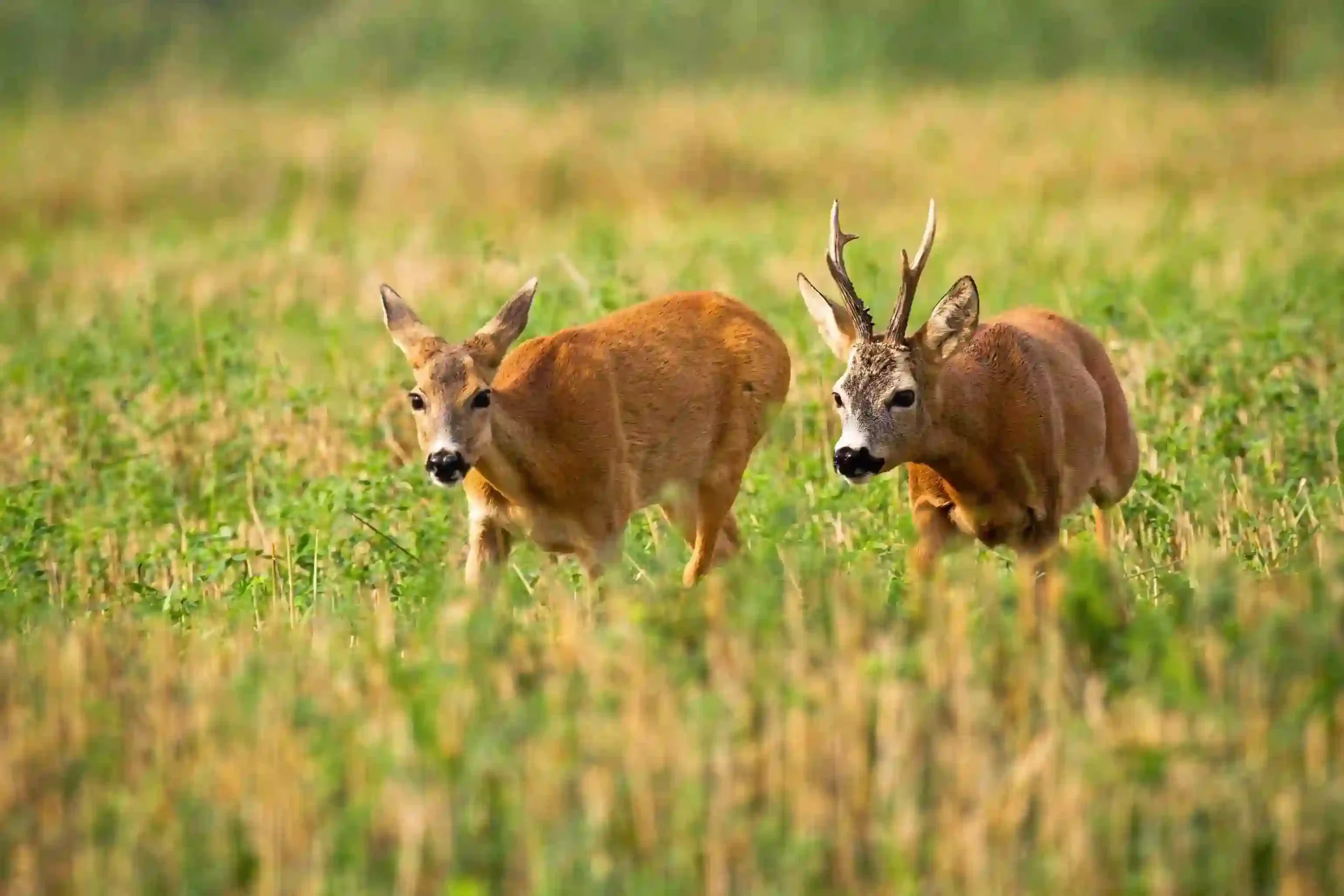
First and foremost, deer will often freeze in place and assess their surroundings before taking off. This is because they have excellent eyesight and can spot potential threats from afar.
If a deer notices something suspicious, it may lower its head and raise its ears to get a better view of the area. It may also stomp its hooves on the ground or blow air out of its nostrils as a warning to other deer in the area.
If the perceived threat persists, the deer may begin to tense up, and its body language will become more rigid. Its head and tail may go up, and it may start to take small, quick steps in place. These are all signs that the deer is ready to run and should be given plenty of space to do so.
It’s important to note that deer can be easily spooked, even by small movements or noises. Therefore, observing or hunting them is essential to be as quiet and still as possible.
Additionally, it’s important to be aware of the wind direction, as deer have a keen sense of smell and can detect the human scent from far away. By paying close attention to a deer’s behavior and body language, you can avoid unintentionally triggering its flight response.
What Factors Affect a Deer’s, Running Speed?
We all have seen deer running, but our eyes have no speedometer to measure its speed. We cannot know if the deer is running to its maximum potential or not. Since there are several factors that affect a deer’s running speed. Such as:
Age and Sex
Younger deer, particularly fawns, are generally faster and more agile than older deer. Male deer, also known as bucks, are usually faster than females due to their larger body size and muscular build.
Fitness Level
A deer’s physical fitness level can greatly impact its running speed. Deer that have access to abundant food sources and are in good health are generally faster and more agile than those that are malnourished or unhealthy.
Terrain
The type of terrain a deer is running on can also affect its speed. Deer are more agile on the flat, open ground compared to steep hills or rocky terrain. Additionally, obstacles such as fallen trees or dense underbrush can slow a deer down and hinder its ability to run at top speed.
Predators
The presence of predators, such as wolves or coyotes, can also affect a deer’s running speed. When threatened, deer can run faster and for longer periods of time than they would under normal circumstances.
The fear of being caught and killed by a predator triggers the deer’s “fight or flight” response, allowing it to run faster and more efficiently.
Weather Conditions
The weather can also affect a deer’s running speed. Wet or icy conditions make it more difficult for a deer to build up momentum and run at its full capacity, while dry weather results in better footing and faster speeds.
Final Words On How Fast Can A Deer Run?
Despite the numerous factors that can affect a deer’s running speed, it is generally accepted to be between 30 and 40 mph. However, this figure can vary greatly depending on age, sex, terrain, and other external factors.
It is also important to note that deer are excellent swimmers. They have been known to swim several miles in open water and can reach impressive speeds underwater. This further demonstrates their amazing adaptability and resilience in the wild.
Moreover, one should never underestimate the power of nature or the incredible abilities of animals like deer. It’s fascinating to see how they adapt to different environments and use their natural skills to survive!



